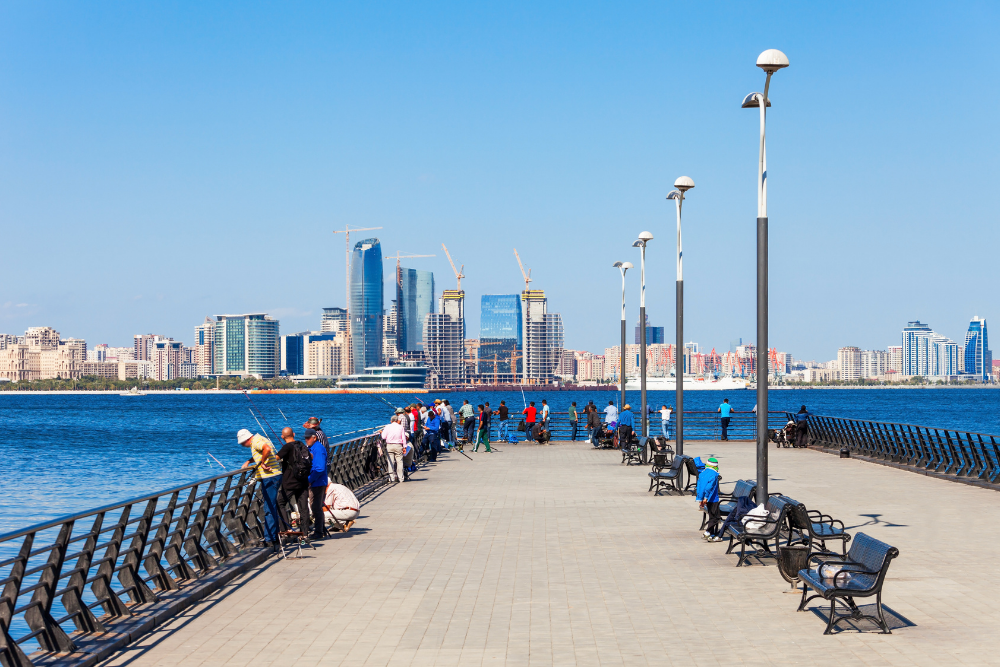Baku, the capital of Azerbaijan, has undergone an extraordinary transformation over the past century. From an ancient Silk Road trading hub to a modern metropolis with futuristic skyscrapers, Baku’s skyline reflects its rich history, oil wealth, and architectural ambitions.
Let’s take a journey through Baku’s evolution, exploring how the city’s skyline has changed from historical landmarks to modern marvels.
1. The Old City: Where It All Began 🏰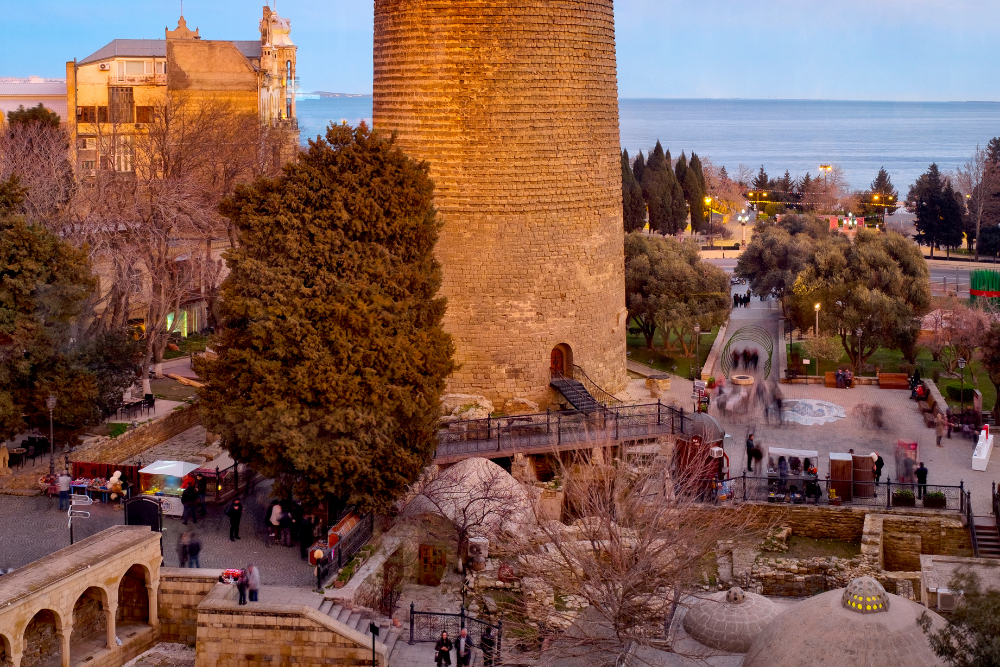
Baku’s skyline was once defined by medieval walls, mosques, and caravanserais. The heart of Baku, known as Icherisheher (Old City), dates back over 1,000 years and is now a UNESCO World Heritage Site.
Key Landmarks:
- Maiden Tower (Qız Qalası) – A mysterious 12th-century fortress that dominates the old city’s skyline.
- Palace of the Shirvanshahs – A 15th-century royal palace, one of the finest examples of Azerbaijani architecture.
- Traditional stone houses and narrow alleys, showcasing the city’s historical charm.
🔹 Skyline Vibe: A city of low-rise stone buildings, ancient fortresses, and Islamic architecture.
2. The Oil Boom & European Influence (19th – Early 20th Century) 🛢️🏛️
In the late 19th and early 20th centuries, Baku became one of the world’s richest cities due to its oil industry. This wealth led to an architectural transformation, as European architects were brought in to design luxurious mansions, theaters, and government buildings.
Key Changes:
- Parisian-style buildings emerged, influenced by Baroque and Neoclassical architecture.
- The Baku Boulevard was developed along the Caspian Sea, creating a scenic waterfront promenade.
- Oil barons’ mansions, such as the Ismailiyya Palace and the Taghiyev Mansion, were built.
🔹 Skyline Vibe: A mix of elegant European-style buildings and traditional Azerbaijani structures.
3. Soviet Era (1920s – 1991): The Rise of Brutalist Architecture 🏢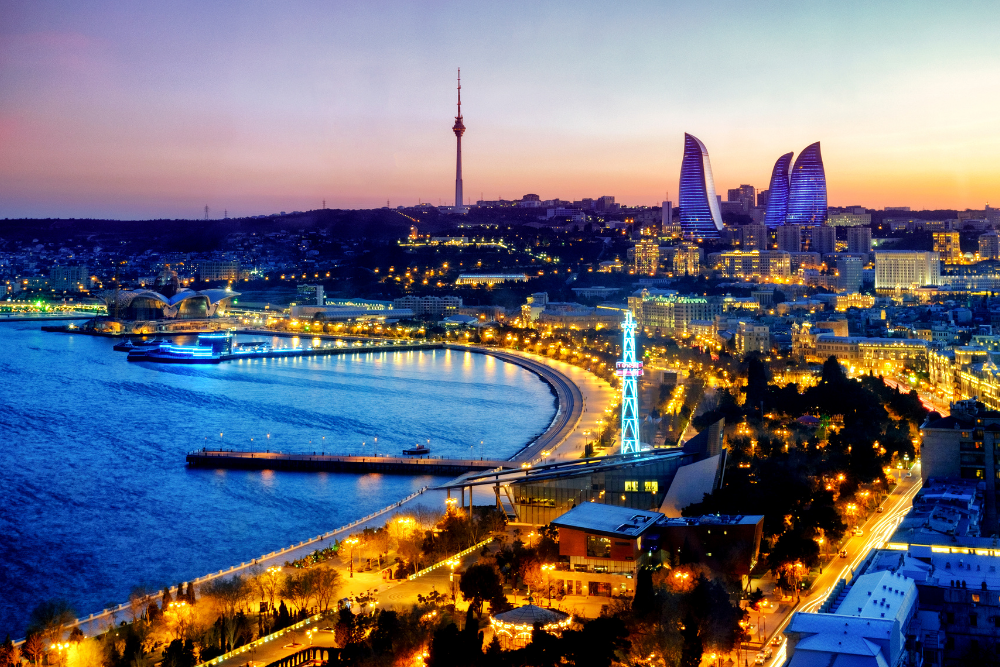
During the Soviet era, Baku’s skyline was reshaped with brutalist-style buildings, massive residential complexes, and industrial zones.
Key Changes:
- Government buildings and Soviet-era apartment blocks dominated the cityscape.
- Monumental structures, such as the Government House of Azerbaijan, were built in Stalinist architecture style.
- Broad boulevards and large public squares were created.
🔹 Skyline Vibe: Functional, massive concrete buildings with a Soviet industrial aesthetic.
4. Post-Independence & The Rise of Modern Baku (1991 – 2010) 🌆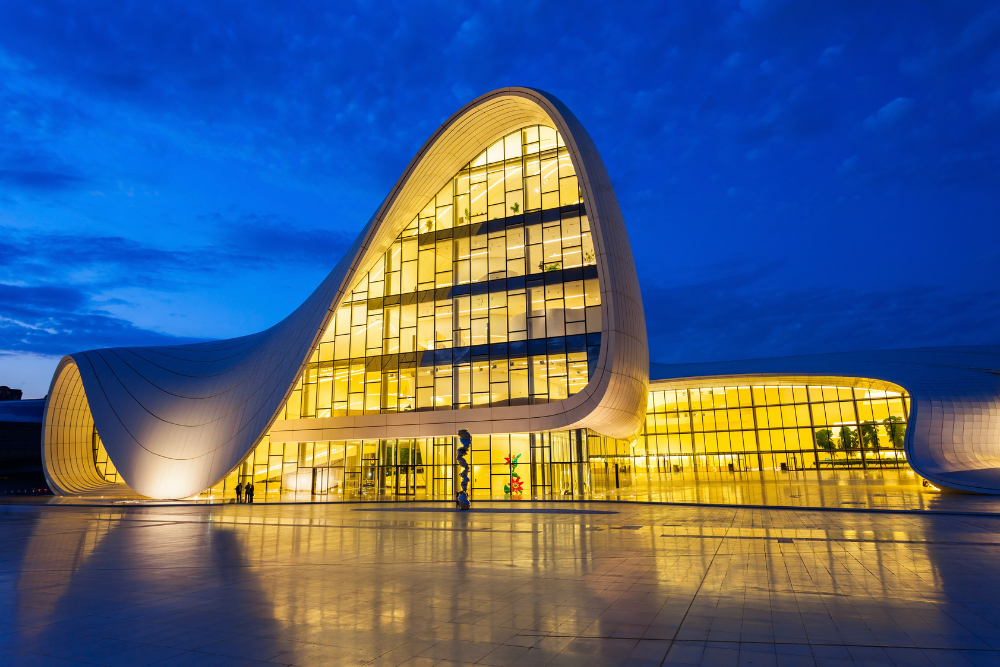
After gaining independence in 1991, Azerbaijan’s oil-driven economy allowed Baku to transform into a modern global city.
Key Changes:
- The city center was renovated, restoring historical landmarks.
- The Heydar Aliyev Center (designed by Zaha Hadid) became an icon of futuristic architecture.
- New business towers and luxury hotels were constructed, signaling Baku’s economic rise.
🔹 Skyline Vibe: A mix of restored historical landmarks and emerging modern structures.
5. The Era of Skyscrapers & Futuristic Design (2010 – Present) 🌆🏙️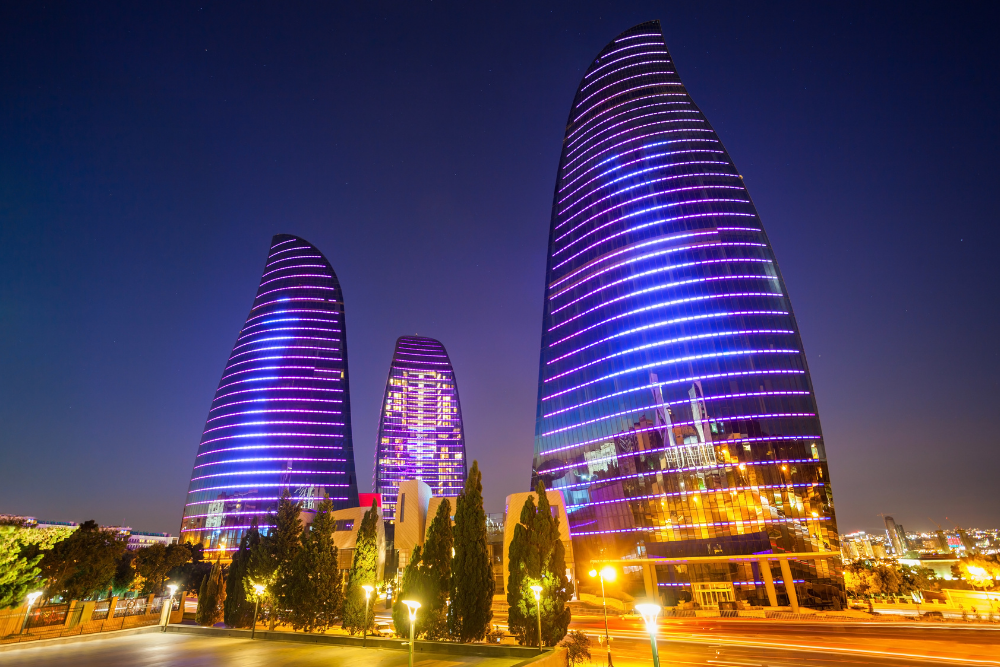
The last decade has seen Baku’s most dramatic transformation, with futuristic skyscrapers, modern infrastructure, and high-tech urban developments.
The Most Iconic Additions to Baku’s Skyline:
🔥 Flame Towers (2012):
- Baku’s most recognizable landmark—three flame-shaped skyscrapers symbolizing Azerbaijan’s Zoroastrian heritage.
- Covered in LED screens that light up in dazzling displays at night.
🏛️ Heydar Aliyev Center (2012):
- Designed by Zaha Hadid, this flowing, futuristic building is a masterpiece of modern architecture.
- One of the most photographed buildings in the world.
🌊 Caspian Waterfront Mall (2016):
- Inspired by the Sydney Opera House, this modern shopping and entertainment complex is built on Baku’s seafront boulevard.
🏗️ SOCAR Tower (2016):
- Azerbaijan’s tallest skyscraper, home to the State Oil Company of Azerbaijan (SOCAR).
🌉 Baku Crystal Hall (2012):
- Built for the Eurovision Song Contest, this glittering venue resembles a futuristic spaceship.
🔹 Skyline Vibe: A mix of ultra-modern skyscrapers, LED-lit towers, and contemporary design masterpieces.
6. The Future of Baku’s Skyline: What’s Next? 🚀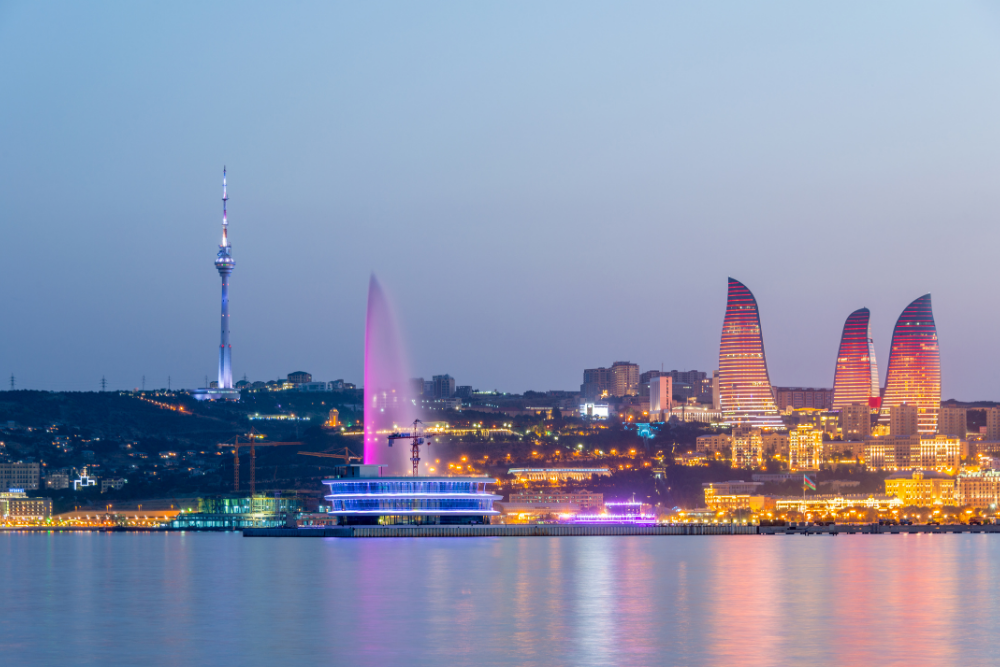
Baku continues to evolve, with several mega-projects planned for the future.
🌍 Upcoming Developments:
- Azerbaijan Tower – Planned to be one of the tallest skyscrapers in the world (over 1,000 meters high!).
- New smart city districts, blending green spaces, AI technology, and futuristic design.
- Expansion of the Caspian waterfront, creating more luxury resorts, entertainment venues, and business hubs.
Final Thoughts: A City of Contrasts & Innovation 🌟
Baku’s skyline evolution reflects its journey through history—from ancient fortresses and oil-boom palaces to Soviet blocks and futuristic skyscrapers. Today, it stands as a global city, blending heritage and modernity in a breathtaking skyline.
✨ Which part of Baku’s skyline is your favorite? Let me know in the comments! 🚀🌇





